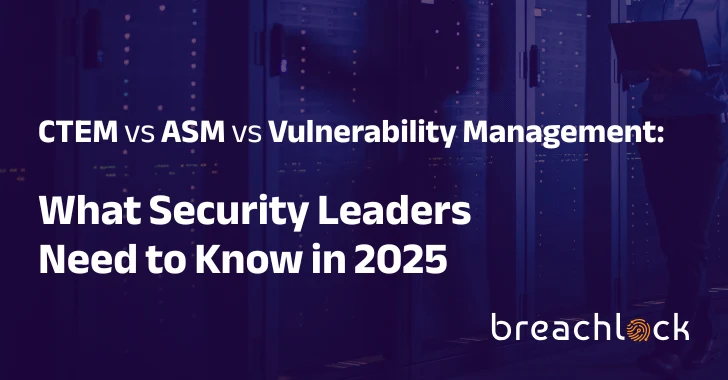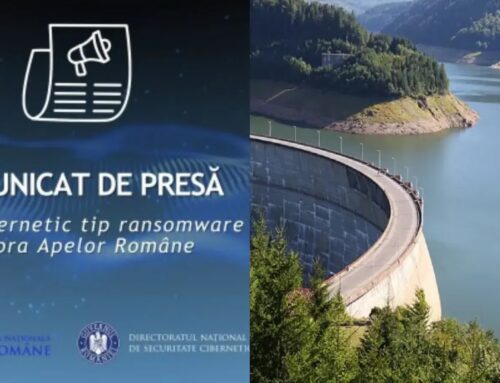
CTEM vs ASM vs Vulnerability Management: What Security Leaders Need to Know in 2025
CTEM vs ASM vs Vulnerability Management: What Security Leaders Need to Know in 2025
The security landscape in 2025 demands more than just a reactive stance. Enterprise security teams grappling with sophisticated threat actors and emerging attack vectors understand that traditional, passive cybersecurity measures frequently fall short. To truly prioritize cybersecurity, organizations must adopt proactive, adaptive, and actionable strategies that interoperate seamlessly. This shift in mindset brings three critical methodologies to the forefront: Continuous Threat Exposure Management (CTEM), Attack Surface Management (ASM), and traditional Vulnerability Management. Understanding their distinct roles and synergistic potential is paramount for security leaders charting their defense strategies for the coming years.
Vulnerability Management: The Foundation of Defense
Vulnerability Management (VM) is the longest-standing and most fundamental practice among these three. It focuses on identifying, assessing, remediating, and mitigating security weaknesses within an organization’s systems, applications, and networks. This process is typically driven by scanning tools that detect known vulnerabilities, often cataloged with CVE numbers (Common Vulnerabilities and Exposures).
- Identification: Regular scanning of IT assets (servers, endpoints, network devices, applications) to discover known software bugs or misconfigurations.
- Assessment: Analyzing the severity and potential impact of identified vulnerabilities, often using CVSS (Common Vulnerability Scoring System) scores.
- Prioritization: Ranking vulnerabilities based on their risk to the organization, considering factors like exploitability and asset criticality.
- Remediation: Applying patches, configuration changes, or other corrective actions to eliminate or reduce the risk posed by vulnerabilities.
- Verification: Re-scanning to ensure that remediation efforts were successful.
While crucial, VM primarily addresses known weaknesses. It’s often static, performing scans at intervals, and may not fully account for an attacker’s perspective or the dynamic nature of cloud environments. For instance, a critical vulnerability like CVE-2024-22288 might be identified and patched, but VM alone might not reveal if that patch was successfully deployed across all instances or if an active exploit targeting it is underway.
Attack Surface Management (ASM): Seeing Like an Attacker
Attack Surface Management takes a broader, external-in view. It focuses on discovering, inventorying, and continuously monitoring all digital assets that could be exposed to potential attackers, both known and unknown to the organization. This includes internet-facing assets (websites, servers, cloud instances), shadow IT, third-party exposures, and even employee credentials found on the dark web.
- Discovery: Automating the identification of all internet-facing assets, including those unintentionally exposed or forgotten.
- Inventory: Maintaining a comprehensive, up-to-date inventory of the entire attack surface.
- Monitoring: Continuously looking for new exposures, changes in configurations, or vulnerabilities in exposed assets.
- Analysis: Understanding how attackers might leverage these exposures, going beyond simple vulnerability identification to include misconfigurations, exposed APIs, or compromised credentials.
Unlike VM, ASM doesn’t just look for specific vulnerabilities; it maps the landscape an attacker sees. It can uncover forgotten public S3 buckets, exposed development environments, or unmanaged domains that VM tools might miss because they aren’t part of the “known” inventory. An ASM platform might flag an exposed administrative interface, which while not having a specific CVE, presents a significant attack vector.
Continuous Threat Exposure Management (CTEM): From Reactive to Proactive
Continuous Threat Exposure Management (CTEM) is the most holistic and advanced approach, integrating elements of both VM and ASM while adding a crucial layer of proactive, threat-centric validation. CTEM simulates real-world attack paths to identify exploitable exposures and prioritize remediation based on actual risk and potential business impact. It operates in a continuous loop, validating the effectiveness of security controls against evolving threats.
The CTEM lifecycle, as outlined by sources such as The Hacker News, typically involves five phases:
- Scoping: Defining the critical assets and business processes to protect, aligning with organizational risk.
- Discovery: Continuously identifying all potential attack surfaces and vulnerabilities across the defined scope, much like ASM and VM.
- Prioritization: Going beyond common scoring systems to prioritize exposures based on their exploitability by active threats, potential impact to critical assets, and the likelihood of attack.
- Validation: Actively testing and validating whether identified exposures are genuinely exploitable within the organization’s unique environment, often through automated penetration testing or breach and attack simulation (BAS).
- Mobilization & Improvement: Communicating actionable remediation steps to relevant teams and continuously refining the security posture based on validated findings. This includes verifying that remediation efforts effectively close the validated gaps.
CTEM’s strength lies in its ability to simulate attacks, providing empirical evidence of exploitable paths. For example, while VM might tell you CVE-2024-20925 exists on a server, and ASM might tell you that server is internet-facing, CTEM would actively attempt to exploit CVE-2024-20925 and demonstrate if it leads to a critical system compromise, considering existing security controls like firewalls or EDR.
The Synergy: How They Work Together
These three disciplines are not mutually exclusive; they form a symbiotic relationship crucial for a strong security posture in 2025.
- VM provides the granular vulnerability data: It’s the foundational layer, ensuring known weaknesses are identified and tracked.
- ASM expands the scope: It ensures that all potential entry points, including shadow IT and forgotten assets, are brought into view for VM to scan and for CTEM to validate.
- CTEM validates and prioritizes based on real-world risk: It takes the findings from VM and ASM, simulates attacks, and identifies the truly exploitable paths that pose the greatest risk, guiding security teams on where to focus their limited resources for maximum impact.
Imagine a scenario: ASM identifies a new, unmanaged cloud instance. VM scans it and finds several high-severity vulnerabilities commonly associated with CVE-2024-0001. CTEM then validates if any of these can be chained with other misconfigurations or weak credentials to gain access to sensitive data within the organization, providing a clear, actionable path for remediation focused on the most critical exposure.
Remediation Actions for a Proactive Security Posture
Adopting CTEM, ASM, and sophisticated VM practices requires a strategic shift. Security leaders should consider the following actionable steps:
- Integrate Data Sources: Ensure your VM, ASM, and CTEM platforms can share data. A unified view of vulnerabilities, exposed assets, and validated attack paths is critical.
- Automate Discovery: Invest in tools that automatically discover and map your entire attack surface, including cloud assets, IoT devices, and shadow IT.
- Prioritize Contextually: Move beyond simple CVSS scores. Prioritize remediation based on the business criticality of the affected asset and whether a vulnerability is actively exploited or validated as an attack path by CTEM.
- Implement Continuous Validation: Regularly conduct automated breach and attack simulations (BAS) or red teaming exercises as part of your CTEM program to continually test security controls against the latest threats.
- Foster Collaboration: Break down silos between security, operations, and development teams. Effective remediation requires coordinated effort.
- Measure and Improve: Track metrics related to exposure reduction, time to remediate validated threats, and coverage of your attack surface. Use these insights to continuously refine your security strategy.
For organizations looking to enhance their exposure management, several tools can assist in these areas:
| Tool Name | Purpose | Link |
|---|---|---|
| Tenable.io | Vulnerability Management, Exposure Management | https://www.tenable.com/ |
| Expanse (Palo Alto Networks) | External Attack Surface Management (EASM) | https://www.paloaltonetworks.com/products/security-operations/expanse |
| Mandiant Advantage Attack Surface Management | External Attack Surface Management (EASM) | https://www.mandiant.com/advantage/attack-surface-management |
| Cymulate | Breach and Attack Simulation (BAS), CTEM platform | https://cymulate.com/ |
| Picus Security | Breach and Attack Simulation (BAS), CTEM platform | https://www.picussecurity.com/ |
| Nessus | Vulnerability Scanning | https://www.tenable.com/products/nessus |
Conclusion
The transition from a reactive to a proactive security posture is defining enterprise cybersecurity in 2025. Vulnerability Management, Attack Surface Management, and Continuous Threat Exposure Management are not competing methodologies but rather complementary pillars of an adaptive defense strategy. Security leaders who embrace this synergistic approach, leveraging advanced tooling and prioritizing remediation based on validated risk, will be best positioned to defend their organizations against the sophisticated threats of today and tomorrow. The future of cybersecurity lies in understanding your exposure as an attacker does and continuously validating your defenses against real-world attack simulations.





